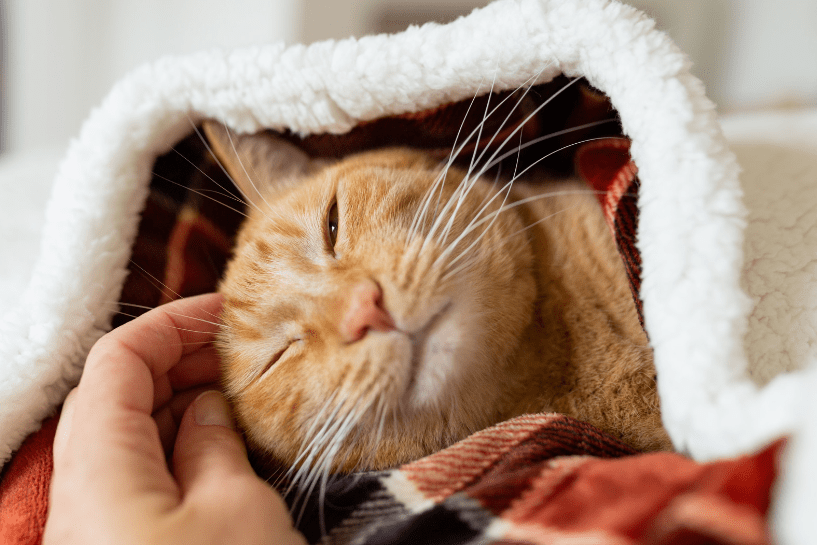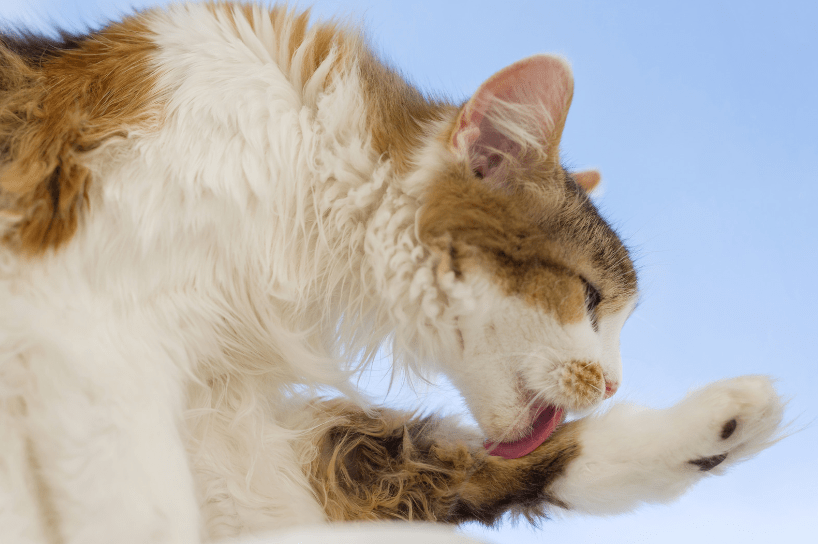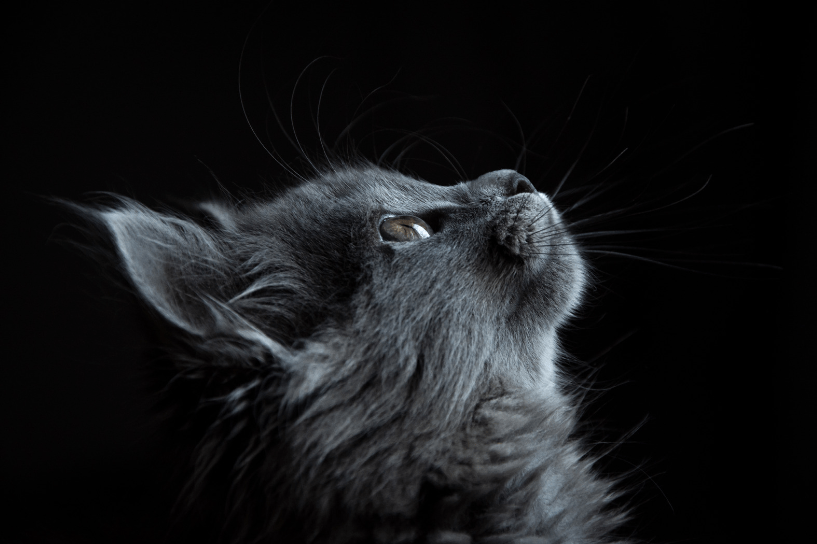Cats contract the Feline Immunodeficiency Virus (FIV), also known as Cat AIDS, primarily through deep bite wounds. The virus is commonly spread in aggressive encounters with infected felines.
Understanding how cats get AIDS is critical for pet owners to prevent the spread of this disease. Feline Immunodeficiency Virus (FIV) mirrors human HIV and primarily attacks the immune system, making cats vulnerable to various infections. The disease is not easily transmitted; casual contact, such as sharing food bowls or mutual grooming, generally poses no risk.
It’s mainly outdoor cats with aggressive behavior that face the highest risk of infection through biting during fights. Indoor cats are considerably safer, provided they aren’t exposed to infected felines. Educating cat owners about FIV and promoting regular veterinary check-ups can significantly contribute to the health and well-being of their pets. By avoiding conflict with unknown or outdoor cats, you can greatly reduce your cat’s risk of contracting this serious virus.
The Prevalence Of Fiv: Feline Immunodeficiency Virus
FIV, or Feline Immunodeficiency Virus, is a serious health concern for cats. Like HIV in humans, FIV attacks the immune system. Infected cats are at greater risk for other infections. Cats can live normal lives with FIV, but knowledge and good care are key.
Incidence In Domestic Cat Populations
Estimates indicate a variable prevalence of FIV among domestic cats. Factors like age, health, and lifestyle affect these rates. Outdoor cats face higher risks due to contact with infected cats. Shared
food and water don’t spread FIV. Bite wounds are the main cause. Statistics show:
- 1.5% to 3% of healthy cats in North America are infected.
- Higher rates are found in sick or stray cats.
- Male cats are more often infected due to their aggressive behavior.
Comparing Fiv To Human Hiv
| FIV |
HIV |
| Affects only cats |
Affects humans |
| Spread mainly through bites |
Spread through bodily fluids |
| No risk to humans |
Can be transmitted to humans |
| The outcome varies based on overall health and the environment |
Managed with antiviral treatments |
Both viruses diminish the immune response. Vaccines are not widely available for FIV, unlike HIV. Simultaneously, FIV cannot pass to humans, making it a categorical concern for felines only.

Transmission Pathways Of Fiv
Feline Immunodeficiency Virus (FIV) is a serious health condition in cats, similar to HIV in humans. Understanding how FIV spreads is crucial for any cat owner. Let’s delve into the main transmission pathways of FIV.
Bites: The Primary Mode Of Fiv Spread
The most common way cats contract FIV is through deep bite wounds. When a cat with FIV bites another, it transfers the virus present in its saliva into the bloodstream of the uninfected cat. Outdoor cats that are aggressive or territorial are at higher risk due to their frequent interactions that may lead to fighting.
Social Behaviors Leading To Infection Risks
Cats engaging in rough play or intimate contact can inadvertently transmit the virus, especially if there are open wounds or sores present. Friendly grooming may also pose a risk if there is the transfer of saliva to an open cut. Sharing litter boxes and food bowls has a low risk for transmission, but it’s wise to provide separate resources for infected cats.
- Aggressive behavior: Increases infection risk
- Grooming: Possible infection route with open wounds
- Separate litter boxes and food bowls to limit risk
Understanding Fiv Infection Stages
Welcome to the intricate world of feline health, where understanding is pivotal for effective care. Cats, like their human companions, can encounter health battles, some unseen to the naked eye. Today, let’s navigate the silent and stealthy stages of how cats can get AIDS through Feline Immunodeficiency Virus (FIV) infection. By grasping these stages, cat owners can provide better support and care for their feline friends.
Acute Phase: The Body’s Initial Response
Once FIV enters a cat’s body, the acute phase begins. This phase represents the body’s first fight against the virus. Most cats may not show clear symptoms, but behind the scenes, FIV begins to weaken the immune system. Some cats might exhibit mild signs such as fever or swollen lymph nodes. This stage is critical as it sets the stage for the body’s ongoing battle with FIV.
Chronic Phase: The Prolonged Battle
The chronic phase is the second stage where the virus has established a presence in the body. Now, the battle is prolonged. During this time, the virus hides and multiplies within the cat’s white blood cells. The cat may seem fine on the surface but internally experiences a slow weakening of the immune system. Symptoms are subtle here, making them hard to catch. Signs to watch for include poor coat condition, persistent fever, or gum disease. At this point, FIV has firmly rooted itself, and monitoring your cat’s health becomes crucial.
Clinical Signs Of Fiv In Cats
Feline Immunodeficiency Virus (FIV) poses a significant health risk for cats around the world. Known as feline AIDS, this condition slowly weakens a cat’s immune system. Understanding the clinical signs can help cat owners seek timely care.
Recognizing Early Symptoms
Identifying FIV in cats early is crucial. The symptoms can be subtle. Certain signs indicate your cat may need a check-up.
- Frequent infections or illnesses
- Slow healing wounds
- Weight loss and poor appetite
- Persistent diarrhea and vomiting
- Sneezing, runny nose, or watery eyes
Progression To Aids In Felines
Over time, FIV progresses and becomes more severe. Knowing the signs of this progression is important for helping your pet. Advanced symptoms mirror an AIDS-like condition in cats.
| Later Stage FIV Symptoms |
| 1. |
Extreme weight loss |
| 2. |
Poor coat condition |
| 3. |
Anemia or low white blood cell count |
| 4. |
Behavior changes |
| 5. |
Severe dental disease |
Diagnosis Of Feline Hiv
Feline HIV, or Feline Immunodeficiency Virus (FIV), affects cats worldwide. Early detection is crucial for managing the disease. Let’s explore how vets diagnose FIV in cats.
Testing Methods For Fiv
Several tests help diagnose FIV in our feline friends. The most common is the ELISA test, which can be done in your vet’s clinic. It checks for FIV antibodies in your cat’s blood. Another method is the Western Blot test, which confirms an FIV infection. In some cases, your vet might use a PCR test to detect the virus’s genetic material.
- ELISA (Enzyme-Linked Immunosorbent Assay)
- Western Blot Test
- PCR (Polymerase Chain Reaction)
Interpreting Test Results
Understanding the test results is key. A positive result through ELISA often leads to a Western Blot for confirmation. A negative result typically means your cat is virus-free. But if your cat was recently exposed, it may take a few weeks for antibodies to show up. This is the window period.
| Result |
Meaning |
| Positive ELISA |
Further testing with Western Blot needed |
| Negative ELISA |
Generally, virus-free, consider window period |
| Positive Western Blot |
Confirms FIV infection |
| Negative Western Blot |
No FIV detected or in window period |
If the result remains unclear, your vet may recommend retesting. It’s important to monitor your cat’s health closely and follow your vet’s advice.
Preventive Measures To Protect Cats
Feline Immunodeficiency Virus (FIV), often referred to as Cat AIDS, is a serious threat to cats. But don’t worry! Owners can take steps to prevent this disease. Let’s explore how.
Vaccinations And Their Effectiveness
Vaccinations can shield cats from various diseases. Yet, no FIV vaccine fully guarantees safety. The FIV vaccine is complex. It is not available everywhere. Talk to a vet for the best advice.
Controlling Risk Factors
We can reduce risk for our feline friends!
- Keep cats indoors to avoid fights.
- Test new cats before bringing them home.
- Spay and neuter to lessen aggressive behavior.
- Avoid sharing food and water bowls.
Regular check-ups are a must. They keep cats happy and healthy!
Treatment Options For Fiv-positive Cats
Understanding the treatment options for FIV-positive cats is crucial for owners. FIV, or Feline Immunodeficiency Virus, is similar to AIDS in humans. This virus affects cats worldwide. There is no cure, but we can manage the disease. Sounds tough, but don’t worry! There are ways to help cats live full and comfortable lives. Let’s check them out.
Managing Secondary Infections
Secondary infections can be a major issue for FIV-positive cats. Because their immune system is weaker, they’re more prone to get sick. But here’s the good news! We can manage these infections effectively. Regular vet check-ups are a must. They ensure early detection and treatment. Cats need to stay up-to-date on vaccinations too. These steps are key to preventing secondary infections. Antibiotics play an important role as well. As soon as a secondary infection is spotted, the vet might prescribe antibiotics. Keep the home environment clean and stress-free for your cat. This also helps prevent new infections.
Supportive Care And Quality Of Life Enhancements
Supportive care makes a huge difference for FIV-positive cats. Think of it as a wellness plan. A balanced diet is at its core. Nutritious food keeps the immune system as strong as possible. Regular exercise and play keep them fit and happy. Here’s where the quality of life comes in. Comfort is key! Cozy sleeping areas and favorite toys can mean the world to FIV-positive cats. Supplements might be a boost too. Always check with your vet first. They’ll know the best options for your furry friend. Regular vet visits are not just about vaccinations. They’re about monitoring the overall health. Blood tests, dental care, and weight checks are just as important. They help catch any changes early on and adapt the care plan accordingly. Caring for an FIV-positive cat means commitment. But with the right approach, these kitties can enjoy a loving and comfortable life. The goal is always a low-stress environment. This supports their health and well-being. Together, you and your vet can make the best choices for your cat’s care. Love, understanding, and proper care pave the way to a happy life for FIV-positive cats!
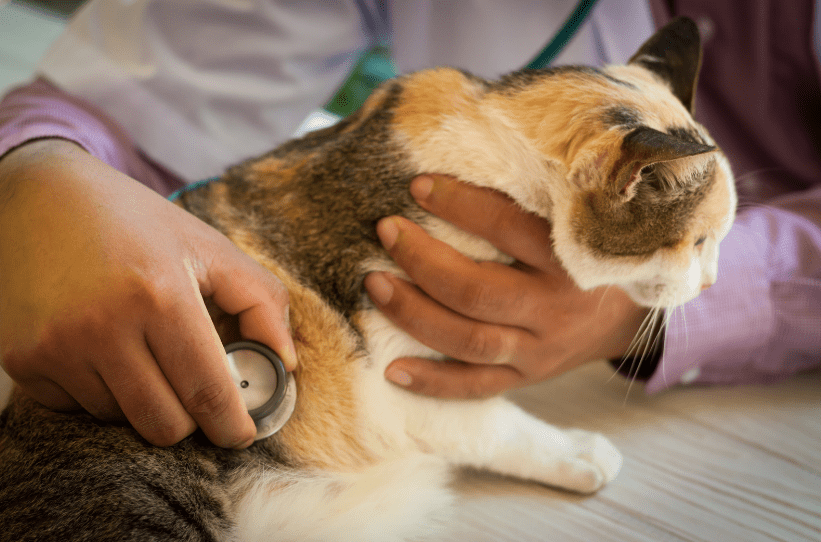
Living With An Fiv-Positive Cat
Feline Immunodeficiency Virus (FIV) often causes panic for cat owners. Fear not! Understanding and planning make living with FIV-positive cats manageable. Love and care go a long way in ensuring a good life for these special companions.
Household Adjustments For Safety
A safe environment is key for FIV-positive cats. Here are easy steps to create it:
- Indoor-only – Keep these cats inside to avoid infections and spreading FIV.
- Stress-free – Reduce stress by providing a calm home.
- Cleanliness – Regular cleaning prevents disease.
Additional safety includes regular vet check-ups and vaccinations. Consider microchipping in case of escape.
Integrating Fiv-Positive And Negative Cats
Integrating FIV-positive and negative cats can be done safely with the right steps:
- Introduce slowly – Proper introductions curb aggression, reducing infection risk.
- Separate foods – Prevent food and water bowl sharing to avoid saliva exchange.
- Neuter – This limits aggressive behavior.
Neutral territories work best for first meetings. Supervise interactions closely at all times. Remember, FIV spreads mainly through deep bite wounds. Cats that cohabit peacefully rarely transmit the virus.
The Role Of Spaying And Neutering
The Role of Spaying and Neutering plays a crucial part in the health and well-being of cats. It goes beyond preventing unwanted litter. This process can help lower the risk of certain diseases, including Feline Immunodeficiency Virus (FIV), often referred to as cat AIDS. Let’s dive into how these surgical procedures contribute to less aggression and fewer infections, along with helping control the cat population.
Reducing Aggression And Infection Rates
Spaying and neutering reduce aggressive behavior in cats. Unneutered males are more likely to fight, a primary way FIV spreads. Infected saliva enters through bite wounds during these fights. Fixing cats lowers these fights hence, reducing infection rates. The surgeries also prevent roaming and territorial disputes. These are common triggers for catfights. FIV no longer easily spreads in a community with fewer aggressive cats.
Population Control Benefits
Spaying and neutering have a direct impact on population control. A single pair of cats can produce many kittens each year. These kittens, in turn, can breed, creating more cats to potentially contract and spread FIV.
- Less stray and feral cats, lower the chances of FIV spreading.
- Fewer cats needing homes means better care for each.
- Controlled populations lead to healthier communities.
Shelters often face overcrowding. Spaying and neutering can help manage this. Less shelter crowding leads to fewer disease outbreaks, including FIV.
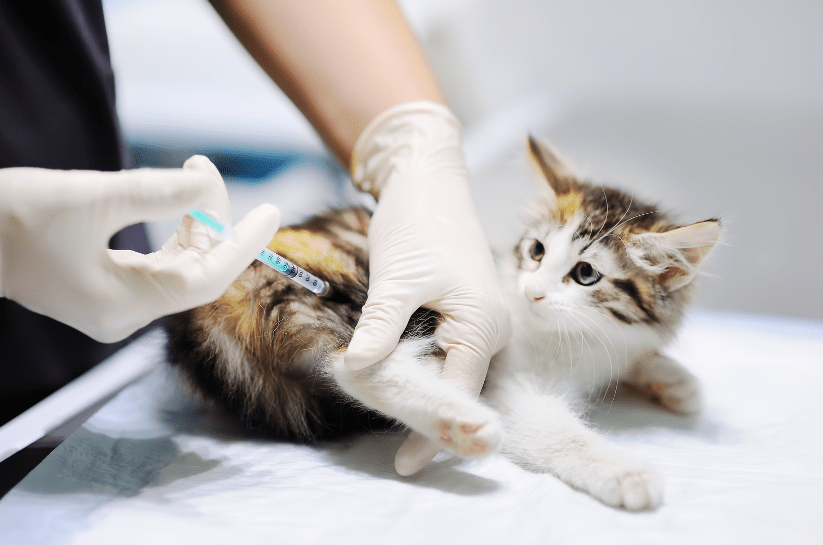
Myths And Misconceptions About Fiv
Feline Immunodeficiency Virus (FIV) is often surrounded by a cloud of misunderstanding and fear. Much like the human version of the virus, FIV leads to many misconceptions about its nature and the fate of cats diagnosed with it. Dispelling these myths is crucial for the welfare of FIV-positive cats and for pet owners to make informed decisions about their care.
Debunking Common Fears
Many believe that FIV is a death sentence for cats. This is not true. Cats with FIV often lead long, healthy lives with proper care. Another widespread belief is that FIV can spread to humans or other pets like dogs; this is also false. FIV is specific to felines and does not pose a risk to humans or other animal species. Furthermore, casual contact such as sharing food bowls or snuggling does not spread FIV; it primarily transmits through deep bite wounds.
- FIV is not transmissible to humans.
- Casual contact does not spread FIV.
- FIV-positive cats can live long, healthy lives.
Educating Pet Owners For Better Fiv Understanding
Education is key in changing perceptions about FIV. Knowing that FIV-positive cats can live harmoniously with other pets helps alleviate unnecessary fears. Providing accurate information about transmission can prevent the needless euthanization of FIV-infected cats. Encouraging responsible pet ownership, regular vet check-ups and preventive care can also help maintain a healthy environment for both FIV-positive and FIV-negative cats.
- Learn about FIV transmission to prevent spread.
- Keep regular vet appointments for FIV-positive cats.
- Promote preventive care to protect all pets.
Conclusion
Understanding how cats contract FIV is critical for prevention and care. Keeping your feline indoors reduces exposure to infected cats. Regular vet check-ups and avoiding fights keep your cat healthy. Remember, a positive diagnosis doesn’t spell doom—many FIV-positive cats live fulfilling lives with proper management and love.

